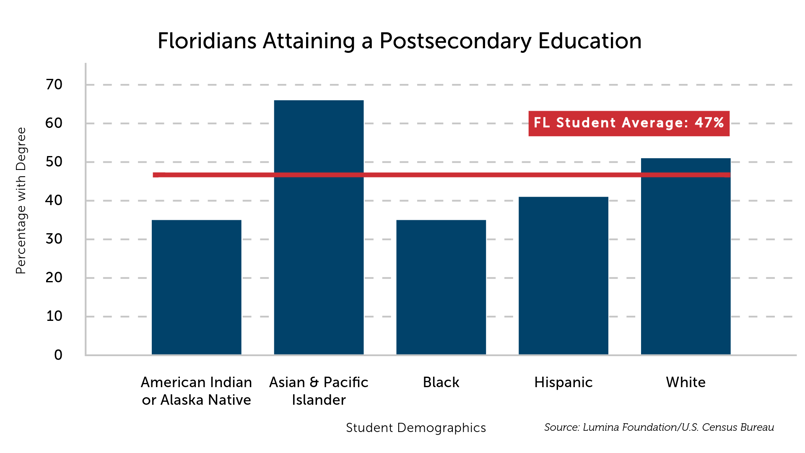Helios Education Foundation is grounded in four core beliefs—Community, Equity, Investment, Partnership—and with one purpose: to create opportunities for individuals in Arizona and Florida to succeed in postsecondary education.
For 20 years, our commitment has been to support educational excellence for all students and close opportunity gaps that continue to exist among historically underrepresented and low-income students. We know that making improvements in these groups, who are represented in all schools, will result in improved outcomes for all.
The following charts highlight the opportunity gaps among students in Arizona and Florida in our three areas of focus.








